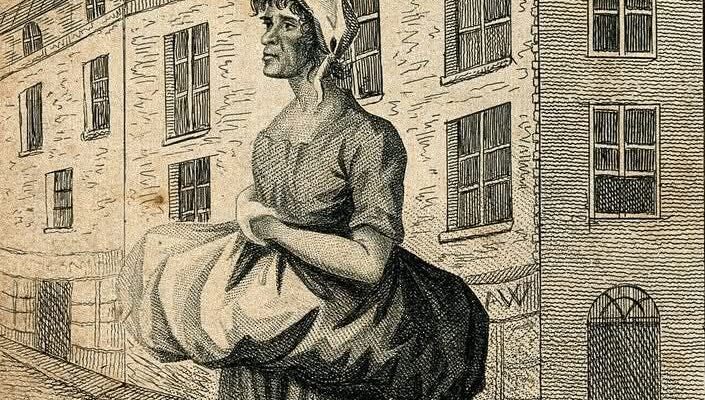Mudlarks were a desperate class of scavengers who combed the muddy shores of the Thames River at low tide in search of anything they could sell. These individuals were driven by poverty and necessity, sifting through the filth and detritus of one of the world’s busiest rivers. They gathered scraps of coal, bits of metal, old bones, coins, and anything else discarded or lost that could be turned into a few pennies. Their labor was grueling and hazardous, performed in cold, foul-smelling mud that could trap the careless and under the constant threat of the tide returning to swallow the shore.

The mudlarks emerged prominently during the late 18th and 19th centuries, and they represented the very poorest of London’s population. The ranks of these river scavengers were filled with women, children, the elderly, and disabled individuals—those for whom society offered little alternative. This was not an occupation by choice but by sheer necessity, a last resort for survival in a rapidly industrializing city that left many behind. It was a brutal existence on the very margins of society.

Among these forgotten laborers, one name has endured in the historical record: Peggy Jones. She scoured the banks near Blackfriars and was mentioned in an 1820 publication called Kirby’s Wonderful and Eccentric Museum; or Magazine of Remarkable Characters. While countless mudlarks passed unacknowledged, Peggy’s image was preserved—not with honor or sympathy, but as a curious oddity. The publication portrayed her less as a person and more as a spectacle, a woman wading through the Thames in search of coal, her struggle twisted into entertainment.
Peggy was described as being about forty years old, with vivid red hair and clad in tattered petticoats. She carried her finds in an apron tied up like a sack, selling what little she gathered for meager earnings—often no more than eight pence a load. These coins frequently went toward gin, a common solace for the poor in London. To the public, she was a figure of mockery, especially when seen weaving drunkenly through the streets, targeted by jeering boys and indifferent onlookers.
Yet, for all the ridicule, Peggy was not without a small measure of respect from those who recognized the hardship she endured. The coal heavers—men working on the barges—sometimes acknowledged her quiet struggle. In acts of silent kindness, they would kick chunks of coal into the river, feigning ignorance while she fished them out. These gestures, though rough and fleeting, were likely the only signs of compassion she regularly encountered.

Then, in February 1805, Peggy disappeared. Her absence was first noticed by the coal heavers, who had grown accustomed to her presence. No official effort was made to find her. There was no investigation, no notice in the papers, and no inquiry into what had happened. She simply vanished, as quietly as she had lived, leaving behind only speculation. Did she fall victim to the river’s unpredictable tides, or did hunger and illness finally overpower her?
There was no memorial, no grave, and no final record. Peggy’s story, like that of so many of the poor in London, was swallowed by the city’s indifference. Her disappearance marked the end of a life lived in constant struggle, and yet it barely registered in the world around her. Her erasure was complete, except for the fleeting, curious mention in a publication more interested in novelty than truth.
The Thames, ceaseless in its flow, has long washed away the stories of those who lived and died in its shadow. Peggy Jones remains one of the rare few whose name has survived, a faint echo of a forgotten world. But even her story is preserved more as a curiosity than a testament. The mudlarks, and the harsh lives they lived, remain largely invisible in the grand narratives of history.



